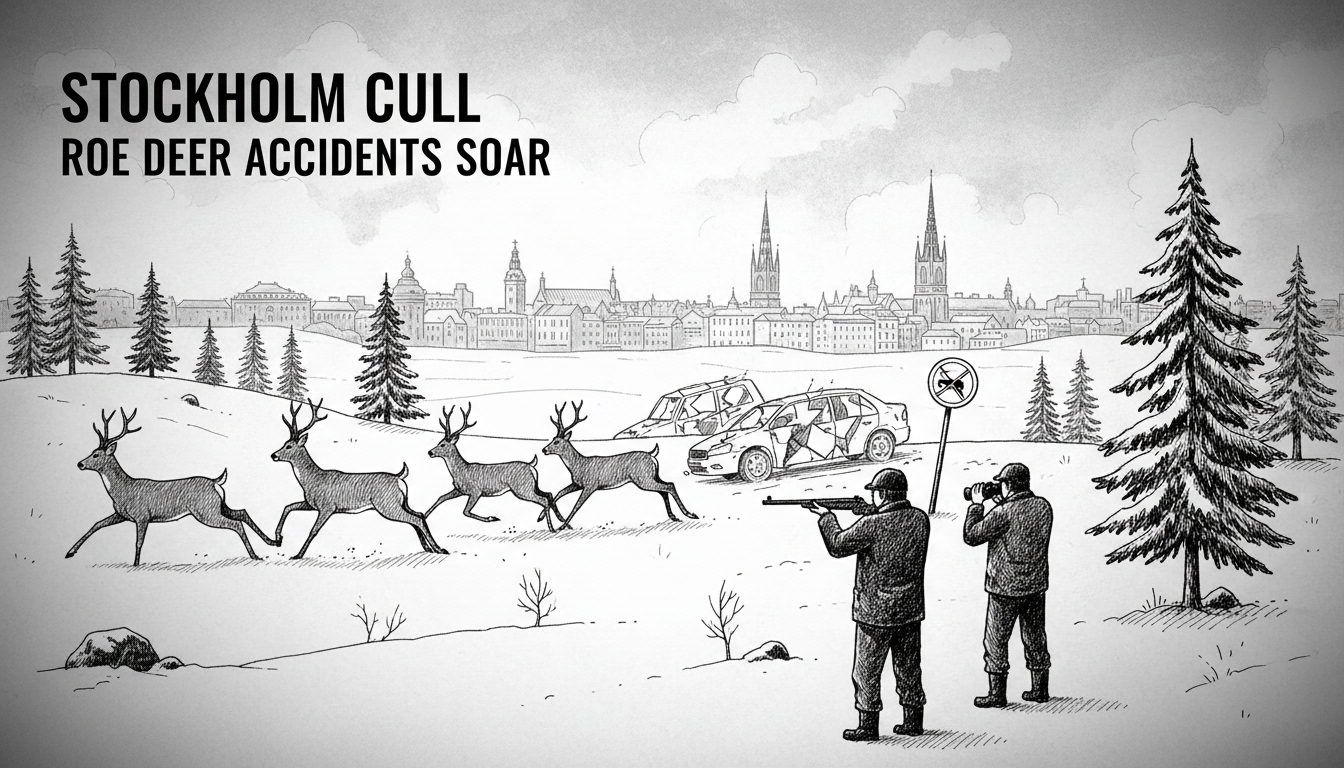Stockholm faces a growing wildlife crisis as roe deer populations explode in southern neighborhoods. City officials report 526 deer have been involved in traffic accidents so far this year, already surpassing last year's total of 370 incidents. The sharp increase has prompted authorities to authorize a significant cull of the deer population.
Mathias Olsson, Stockholm's wildlife coordinator, describes the situation as a major public safety issue. He said in a statement that the deer cause multiple problems beyond traffic accidents. They damage gardens extensively and spread ticks and tick-borne encephalitis throughout residential areas.
The city aims to complete the cull soon with hopes of reducing accidents significantly next year. Officials point to several factors driving the population boom. Mild winters provide more natural food sources while urban gardening creates additional feeding opportunities. Reproduction rates have also increased dramatically with deer now commonly having two or three offspring yearly instead of just one.
Olsson acknowledges the emotional response many residents feel about killing deer. He described the decision as a difficult balancing act. Many residents enjoy seeing deer in their neighborhoods while others view them as pests that damage property. The city feels compelled to act given the rising number of injured animals and growing safety concerns.
This situation reflects broader challenges across Scandinavia as urban wildlife management becomes increasingly complex. Swedish law grants municipalities authority to control wildlife populations when they threaten public safety or cause substantial property damage. The current approach represents a shift from previous decades when deer were less common in urban settings.
Climate change plays a role in these population dynamics. Warmer winters improve survival rates for deer and other wildlife. At the same time, urban expansion creates more border zones where residential areas meet natural habitats. These edge environments often provide ideal conditions for deer populations to thrive.
The decision highlights ongoing tensions in Swedish environmental policy. Sweden maintains strong traditions of both wildlife protection and practical problem-solving. The cull represents a pragmatic response to immediate safety concerns, but it also raises questions about long-term coexistence strategies.
International residents and visitors should exercise increased caution when driving in Stockholm's southern suburbs, particularly during dawn and dusk when deer are most active. The situation demonstrates how environmental changes can create unexpected urban challenges even in well-planned Scandinavian cities.

